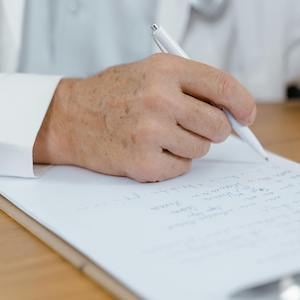Post-diagnosis serum 25-hydroxyvitamin D concentrations in women treated for breast cancer participating in a lifestyle trial in Italy
All claims expressed in this article are solely those of the authors and do not necessarily represent those of their affiliated organizations, or those of the publisher, the editors and the reviewers. Any product that may be evaluated in this article or claim that may be made by its manufacturer is not guaranteed or endorsed by the publisher.
Accepted: 30 October 2023
Authors
Objective. To report cross-sectionally serum levels of 25-hydroxyvitamin D [25(OH)D] in women living in Italy within 12 months from breast cancer (BC) diagnosis.
Methods. Baseline data were obtained from 394 women diagnosed with primary BC, enrolled from 2016 to 2019 in a lifestyle trial conducted in Italy. Subjects’ characteristics were compared between two 25(OH)D concentrations (hypovitaminosis D<20 and ≥20 ng/mL) with the Chi-squared test or Fisher’s exact test for small-expected counts. Using multiple logistic regression-adjusted models, we estimated odds ratios (ORs) of hypovitaminosis D with 95% confidence intervals (CIs) in the total sample and in the unsupplemented subgroup.
Results. Hypovitaminosis D was found in 39% of all subjects, 60% in unsupplemented subjects, and 10% in supplemented subjects. Increasing ORs of hypovitaminosis D were found with increasing body mass index, 25-30, >30, and ≥35 versus <25 kg/m2 (ORs: 2.50, 4.64, and 5.81, respectively, in the total cohort and ORs: 2.68, 5.38, and 7.08 in the unsupplemented); living in the most southern Italian region (OR 2.50, 95%CI 1.22-5.13); and with hypertriglyceridemia (OR 2.46; 95%CI 1.16-5.22), chemotherapy history (OR 1.86, 95%CI 1.03-3.38), and inversely with anti-estrogenic therapy (OR 0.43, 95%CI 0.24-0.75) in the total sample.
Conclusions. Hypovitaminosis D in women recently diagnosed with BC and participating in a lifestyle trial in Italy was widespread and highest with obesity, hypertriglyceridemia, and chemotherapy use. Considering that hypovitaminosis D is a risk factor for lower efficacy of bone density treatments and possibly BC mortality, our results suggest the need to promptly address and treat vitamin D deficiency.
How to Cite

This work is licensed under a Creative Commons Attribution-NonCommercial 4.0 International License.











